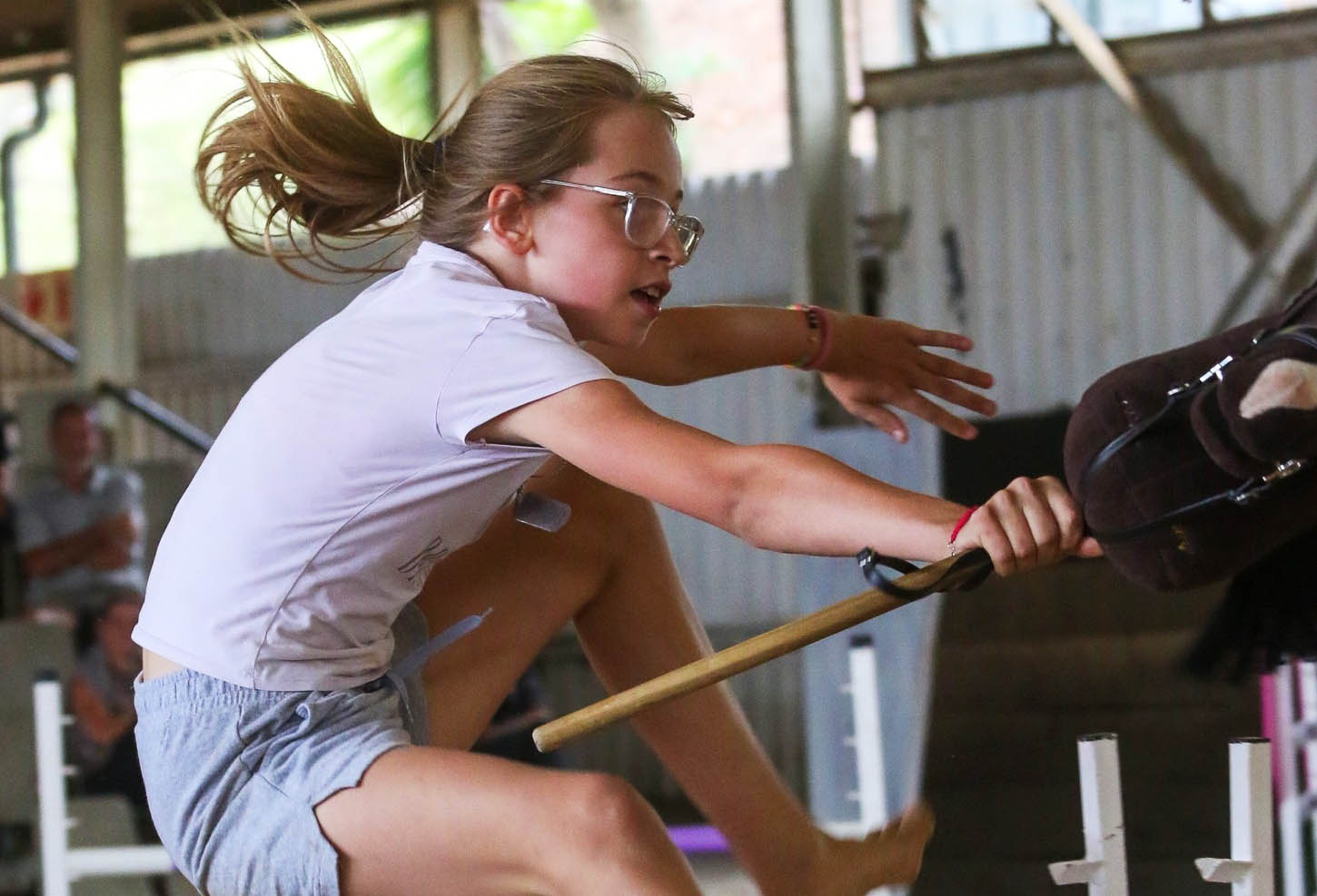When Tamerin Jardine and Keegan Visser first set up the South African Hobby Horse Association, they had modest expectations. Their mission was to unleash creativity and build confidence in an inclusive space, especially for children, but they were unsure how South Africans would respond to the quirky new sport, which has been mocked widely on social media since its 2017 debut in Finland.
Riders straddle sticks with a plush model of a horse’s head on one end while completing a course, which combines elements of equestrian sport such as dressage and showjumping. They race against the clock and incur faults just like “real” riders.
“I thought let’s just build it slowly and see how it goes, but it’s been like a match to a flame,” said Jardine, the association’s “lead rein wrangler and pony plotter”.
She and Visser, who builds the courses, held South Africa’s first hobbyhorse competition at Kyalami Equestrian Park in Midrand, Gauteng, in November 2024. More than 40 children aged between three and 14 took part. At least one hobby dinosaur made an appearance, ridden by Jardine’s son, who has cerebral palsy.
“We had kids coming from Springs, Benoni and Hartbeespoort just to be able to participate in the competition,” Jardine said.
A Cape Town competition followed in January, and the association’s reach has been extended further into the country with a branch in Bloemfontein. Jardine and Visser also have their eye on Limpopo and KwaZulu-Natal to grow the sport.
 Hobbyhorse enthusiasts Qinn Luden (left) and Mila Jardine love to match their outfits at competitions, said Mila’s mother, Tamerin Jardine. (Photo: South African Hobby Horse Association)
Hobbyhorse enthusiasts Qinn Luden (left) and Mila Jardine love to match their outfits at competitions, said Mila’s mother, Tamerin Jardine. (Photo: South African Hobby Horse Association)
Making the horse world accessible
Jordyn Brydges (12) had always dreamt of riding a horse, carrying around her hobbyhorse called Flika everywhere she went from the age of two. But when she was five years old she was diagnosed with leukemia. The chemotherapy suppressed her immune system, which meant she could not be around real animals.
“It was four long years,” said Cathy Nicolau, Jordyn’s great-aunt and guardian.
Jordyn’s competitive hobbyhorse, Valegro, has been central to her recovery, providing not only emotional support in a significantly isolated time of her life, but also giving her the exercise needed to strengthen her muscles again. Competing in November’s competition, she won the open category, which included jumps of 90cm as well as one 1m-high jump.
Hobbyhorsing is accessible because its low cost opens it up to many children. Until now, equestrian sports have been reserved for the upper echelons of society.
“Just to feed a horse comes to R10,000 a month,” said Jardine.
This contrasts with a good-quality hobbyhorse, which costs about R1,500.
Cindy Dubler, a UK-qualified radiographer, has made hobbyhorses for a living since 2022. Unable to work in South Africa until she updates her qualifications, she started her business to keep busy. Having seen the interest, she is now motivated by “giving children that joy of owning a horse, even if it’s not real”.
Dubler’s hobbyhorses are customisable, which she says enables her customers to get as close as possible to their “dream horse”. She cannot keep up with the orders and made 38 just for Christmas presents this past December.
Highly skilled sport
Although many associate hobbyhorsing with childhood play, Jardine says the sport requires high levels of athleticism, with jumps as high as 120cm.
“The agility and skill it takes to clear a jump with a horse between your legs is far more difficult than just athletics,” she said.
Competitors complete 10 jumps of varying difficulty, explained Visser. While negotiating the course, riders have to follow patterns of changing rein, which involves alternating their leading galloping leg.
“Horse riding can be risky and dangerous,” said Visser. Hobbyhorsing, however, provides a way to show off skill in a safer environment, enabling the participants to have more fun.
For now, those still unfamiliar with the sport approach it with cautious curiosity.
“The older teens are wary,” said Jardine. “They’re looking at it and they want to do it, but they’re a little bit nervous that they’re going to be judged because of what is out there on social media.”
Said Nicolau: “I thought it was odd at first, and my sons definitely think it is odd.”
Jordyn, on the other hand, sees hobbyhorsing’s “weirdness” as its best attribute. “People might judge but it’s unique,” she said, recalling a time when one of her peers called her a “furry” for her hobby.
“I see myself walking down the aisle with my hobbyhorse,” Jordyn added.
To Jardine, if you contemplate any sport long enough, they all seem equally bizarre.
“I mean, who thought of walking around a course with a golf club? And yet people get so much joy from it. Why should hobbyhorsing be any different?” DM
This story first appeared in our weekly Daily Maverick 168 newspaper, which is available countrywide for R35.





 Hobbyhorse enthusiasts Qinn Luden (left) and Mila Jardine love to match their outfits at competitions, said Mila’s mother, Tamerin Jardine. (Photo: South African Hobby Horse Association)
Hobbyhorse enthusiasts Qinn Luden (left) and Mila Jardine love to match their outfits at competitions, said Mila’s mother, Tamerin Jardine. (Photo: South African Hobby Horse Association)